What can tell the plaque in the language. Diagnosis of diseases using language.
Contents
- White plaque in the tongue of the infants and newborns: causes and treatment
- White plaque in the language of adults and children: causes and treatment
- Why in the morning is white coating on the tongue how to clean?
- Diagnosis of diseases by language, video:
- White plaque on the tongue during pregnancy: causes and treatment
- Yellow plaque in the language of adults and children: causes and treatment
- Gray plaque on the tongue: causes and treatment
- Plaque in the language brown: causes and treatment
- Orange plaque on the tongue: causes and treatment
- In black tongue: causes and treatment
- Green plaque on the tongue: causes and treatment
- Plaque in the tongue with angina and throat disease: treatment
- Plaque in the language after taking antibiotics: how to get rid?
- Plaque in the language of pancreatitis, gastritis: causes and treatment
- Plaque in the language of adults and children and smell from the mouth: causes, treatment
- Plaque in the tongue and dry mouth and bitterness in the mouth: causes, treatment
- Prophylaxis of plaque in children and adults
- How to properly clean the language, video:
- 5 problems, which can specify the language, video:
What health problems can indicate our language? What kind of doctors need to contact, discovering a raid on the surface of the tongue? Let's understand.
The tongue helps to identify any unfavorable processes in the body. Since ancient times, doctors have considered the patient's language for clarifying the diagnosis. Nowadays, diagnosing a disease on the fly in the language has not lost its relevance. The examination of the patient's language is one of the algorithms of the doctor's actions during the examination.
White coating on the tongue of the infants and newborns: causes and treatment
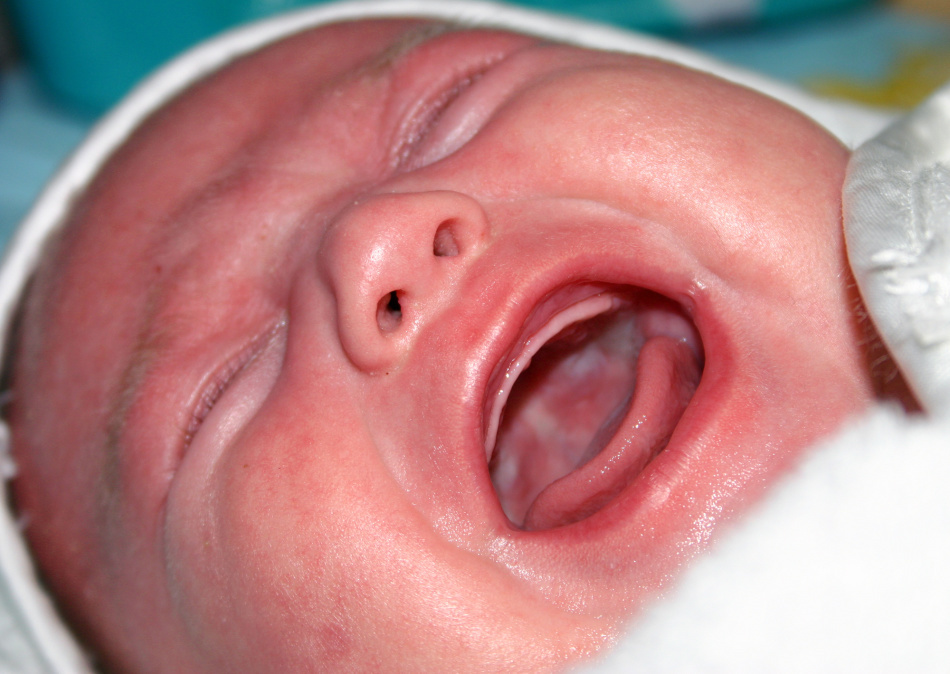 Babies tongue
Babies tongue - Without language, the life of the body can not be imagined. Language allows not only distinctly and articulately to speak, but also to feel the taste and touch the food falling into the oral cavity. Language - the body that helps in the full work of the entire gastrointestinal tract.
- The tongue consists of striated muscles and is covered with a mucous membrane lined with a variety of different papillae. They differ in structure and function.
- In a newborn baby, the tongue has its age characteristics. The child who has just appeared in the world has a wide and short tongue. It occupies the entire oral cavity of the child and is inactive. The surface of the tongue is covered with pronounced papillae, which play a big role in feeding the baby with mother's milk.
IMPORTANT: Paginal papillae appear already on the 6-7th month of intrauterine development of the baby.
 Toddler's healthy tongue
Toddler's healthy tongue - The surface of the tongue of a small child is smooth and moist with a gently pink color. Since the baby's main food is mother's milk, the child's tongue can have a small white coating on the tongue. It's okay if the baby feels great, he has a good appetite and sleep.
- If white becomes not only the tongue of the child, but also the gum and the inner surface of the cheeks, he fits, badly eats, then most likely - this is the result of the life of the fungus of the genus Candida. The disease is called thrush .
- White coating literally envelops the mouth and the tongue of the child. The disease occurs with weakened immunity and infection through dirty dummies, nipples, toys, infected mother.
- A newborn baby's milk must be treated under the supervision of a pediatrician who prescribes treatment depending on the degree of fungal attack. Usually used topical medications. Remove the yeast help soda solutions, which wipe the affected area.
White plaque in the language of adults and children: causes and treatment
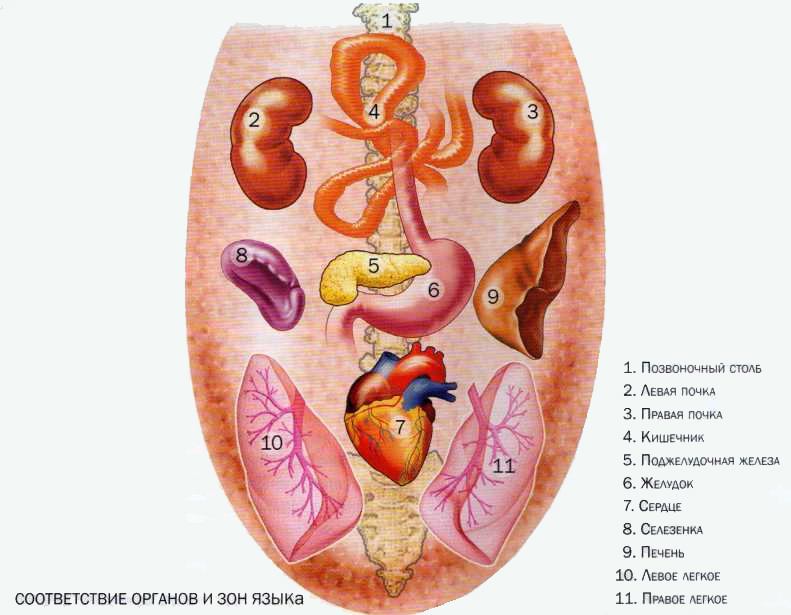 Projection of organs in
Projection of organs in - In a healthy person, the tongue has a pink color with a slightly whitish hue. The color of the tongue depends on the condition of the filiform papillae of the organ. These are the most numerous papillae that pass along the walls and edge of the tongue.
- The body of the papilla is covered with a large layer of flat epithelium, capable of keratinization. When the epithelium is sloughing, the horny remnants of the cells have a whitish shade, so the tongue has a pink-white color.
- If the digestion fails for some reason, the epithelium in the form of a stratum corneum is lingering in the tongue. With visual examination, the tongue becomes white due to a plaque in the form of a layer of cornified epithelium. There is, so-called, "oblozhenny language."
- Frequent diseases of viral and microbial infections occur due to low immune status. Small children are especially susceptible to infectious diseases. They have dense white deposits in the tongue. Strengthening immunity with the use of vitamin complexes and immunostimulants increase the resistance of the body to colds.
Why in the morning a white touch on the tongue, how to remove?
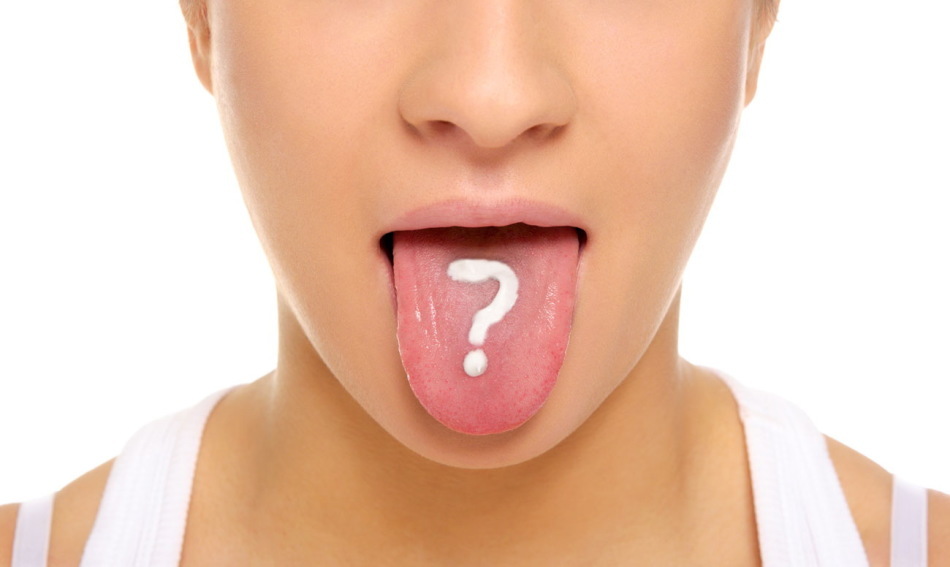 White coating indicates digestion disorders
White coating indicates digestion disorders - A whole world of microorganisms inhabits the human mouth. The products of their vital activity accumulate in the form of a whitish layer on the surface of the tongue. During the night, the exfoliated epithelium particles containing mucoproteins are collected in the tongue. All together is layered on the tongue in the form of a translucent white coating.
- This coating is completely safe and easy to remove from the surface of the tongue with simple morning hygiene procedures: cleaning teeth and tongue. If the raid does not disappear within a day and acquires a more dense structure, this may indicate a malfunction in health.
Diagnosis of diseases by language, video:
White plaque on the tongue during pregnancy: causes and treatment
 Pregnant women may have a plaque in the language
Pregnant women may have a plaque in the language - Pregnancy is a special period in the life of a woman when one should take particular care of one's health. During pregnancy hormonal reorganization of a female organism occurs and often the immune system weakens.
- A future mother may have a white coating on her tongue. If, at the same time, the woman feels well and the pregnancy is carried out according to the proper scenario, this plaque should not be disturbed by the pregnant woman.
- White dense plaque with an unpleasant odor from the mouth can signal bad luck. Most often this is due to insufficient oral hygiene or the presence of carious teeth. In this case, you should visit a doctor and treat your teeth.
Yellow plaque in the language of adults and children: causes and treatment of
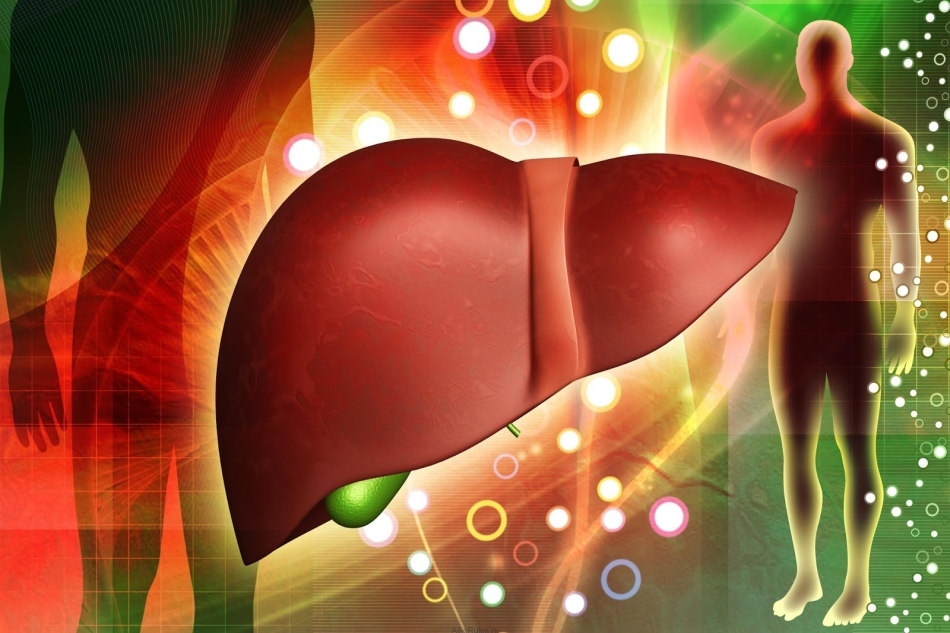 Liver diseases are reflected in the tongue in yellow tinge
Liver diseases are reflected in the tongue in yellow tinge A yellow tinge of dense structure that is difficult to remove with simple hygienic measures can be associated with:
- with hepatic pathology
- by diseases of the gastrointestinal tract and pancreas
- by taking medications
- by infectious and viral diseases
Diseases of the gallbladder and liver often cause a yellow coating with different shades: from greenishyellow, orange and brown. Gallstone disease, hepatitis, liver cirrhosis and other hepatic pathologies are accompanied by yellow-brown deposits in the tongue.
In this case, the patient complains of morning dryness and bitterness in the oral cavity. These symptoms require a comprehensive examination of the patient's liver. In the early stages of the disease can be limited to adjusting the diet and prescription of choleretic drugs and medicines.
Disturbances in the digestion and functioning of the pancreas can also cause yellowish raids in the tongue. In this case, there may be an unpleasant odor from the mouth, nausea, sucking pain in the morning. Such symptoms should be taken into account and examined by a gastroenterologist.
Some medicines cause yellowing. As a rule, after the abolition of the medicine, the tongue is cleared and acquires a healthy color.
Microbial and viral infections are characterized by the accumulation of a large number of viruses and bacteria in the body. As a rule, all infections are accompanied by an increase in temperature. Such processes cause the "taxation" of the tongue with a yellowish coating. The higher the body temperature rises, the more intense the shade of plaque in the tongue becomes.
 Yellow plaque on the tongue of the child is cause for concern
Yellow plaque on the tongue of the child is cause for concern Yellow plaque on the tongue of the children
The following causes of the appearance of yellow plaque in the child
- The introduction of vegetable complementary foods and some types of cereal can cause a slight yellowish coating in the tongue after eating.
- The baby's diet contains a large amount of carrots, persimmons, pumpkins and other vegetables and fruits containing carotene, which can color not only the tongue, but also the skin, eye sclera in yellow.
- Sweets in the form of caramels, chewing gums and other children's "joy", containing the yellow pigment
- . If the yellow coating is associated with the deterioration of the child's well-being, while the baby complains of stomach pain, refuses to eat, perhaps his initial stage of dyskinesia bile ductsor disturbances in digestion. It is necessary to show the child to the doctor who will correct a food and will appoint or nominate corresponding or meeting treatment.
Gray plaque on the tongue: causes and treatment
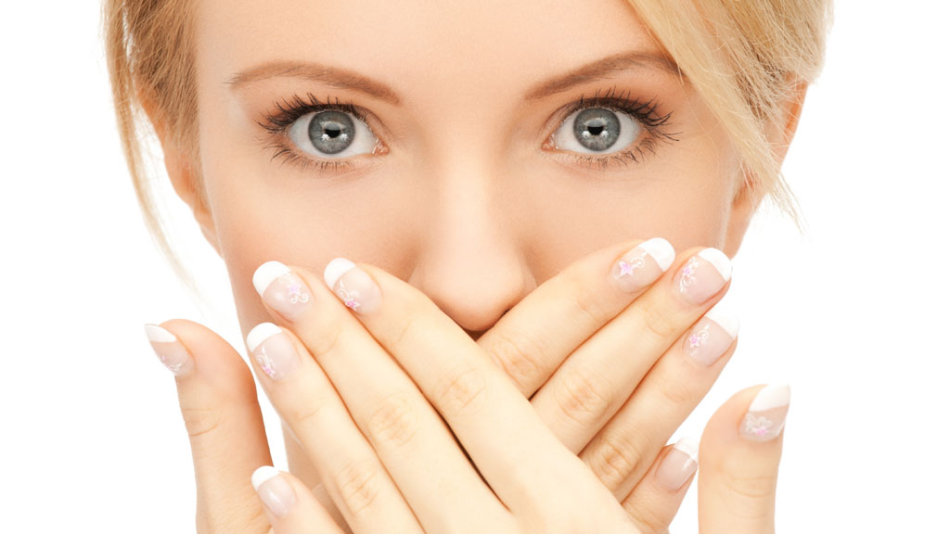 Abundant plaque in a language of darker shades not associated with taking coloring products - an occasion to consult a doctor
Abundant plaque in a language of darker shades not associated with taking coloring products - an occasion to consult a doctor Gray shade of the tongue may be a harbinger of many diseases. Visit the doctor if:
- gray plaque on the tongue is present for a long time
- cleaning of the tongue does not lead to the elimination of plaque, and the deposits cover the tongue more tightly
- besides changing the color of the tongue, complaints are observed about the deterioration of the body
Gray color of the tongue can be calledmalfunctions in the body for many reasons.
- Inflammatory processes in the oral cavity of : the dominance of bacteria and products of their vital activity causes thickening of the papillae, which are overgrown with microbial "rubbish" and lining the tongue with a gray bloom. Daily hygiene measures associated with cleaning teeth and tongue, rinsing the mouth after eating, eliminating foci of infection( sanitation of teeth, treatment of gum disease and oral mucosa) will lead to the elimination of plaque.
- To dehydration of the body results in insufficient drinking regimen. Dry mucous and skin, increased fatigue, frequent constipation - the main symptoms of lack of water in the body, like the gray coating on the tongue.
- Infectious processes of the respiratory tract : bronchitis, pneumonia, tracheitis. The tongue will turn pink again after full recovery.
Plaque on the tongue brown: causes and treatment
 Corfus and cigarettes can cause a brown coating in the
Corfus and cigarettes can cause a brown coating in the language IMPORTANT: It should be noted that lovers of strong tea, coffee lovers and heavy smokers often have brown pigmentation of the tongue and yellow shade of tooth enamel.
Brown tongue coating usually accompanies such pathologies:
- liver and biliary tract diseases
- diabetic coma
- pellagra( vitamin deficiency associated with a deficiency of vitamin PP)
- dehydration in severe intoxications and poisonings
- use of certain medications: Iodinol, Pharyngosept, Tetracycline hydrochloride, vitaminsgroup B, Lugol's solution, etc.
If the plaque does not cause trouble and passes through it for a while, do not bother. If there are accompanying symptoms that bring discomfort, you should consult a doctor.
Orange plaque on the tongue: causes and treatment
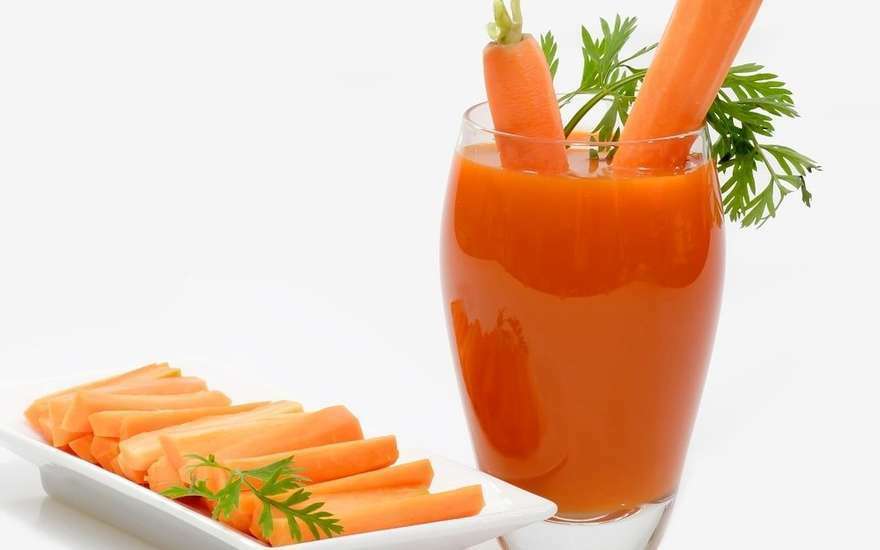 Fruits and vegetables with orange pigment can cause plaque in
Fruits and vegetables with orange pigment can cause plaque in - Orange plaque often causes fruits and vegetables, saturated with carotene and colored in bright colors. Fans of raw carrots and carrot juice, persimmons, apricots, pumpkins can observe the staining of the tongue papules in the orange pigment passing with time.
- Individual medicines can also form a touch of orange shades, which disappears after the end of the drug course.
- The reason to pay attention to your health is an orange coating in a language that is not removed by brush or scraper. Change in the color of the tongue can be due to the throwing of gastric juice into the oral cavity. And this may be the beginning of gastroenterological diseases: gastritis, reflux esophagitis, etc. In this case, you should review your diet and, if necessary, undergo a survey.
In the language of black plaque: causes and treatment
 Black
Black Black dense plaque in the tongue often speaks of serious disorders in the body. The presence of such a plaque that does not pass for a long time gives an excuse to show up to the doctor and examine your health. Many problems in the body can lead to black tongue plaque.
- Shift of the acid-base balance towards acidification. An acidosis of the body can occur with an unbalanced diet, starvation, intestinal disorders, fever.
- Chromogenic fungus , settled in the oral cavity can cause black deposits in the tongue and black-and-green spots on the tooth enamel.
- Slagging of the organism for the abuse of "unhealthy" food.
- Prolonged viral and microbial infections of .
- Crohn's disease is a genetic disease that affects the gastrointestinal tract.
- Problems with bile ducts and liver .
- Oncological diseases .
An accurate diagnosis, treatment and compliance with the doctor's recommendations will help to solve the problem with black sediments.
IMPORTANT: It should be remembered that some medicines and products can color the tongue black: activated charcoal, blackberry, blueberry, blueberry, bird cherry, mulberry. Such a raid usually disappears by itself and does not pose a threat.
Green plaque on the tongue: causes and treatment
 Elementary oral hygiene is the solution to all problems
Elementary oral hygiene is the solution to all problems Green sediments are not common on the surface of the tongue. The color range varies: from yellow-green to yellow-brown with an admixture of greenery. Consider the reasons for the appearance of green shades of stratification in the language.
- Elementary ignoring the rules of hygiene can lead to this type of raid. Daily cleaning of teeth and tongue, mouth rinsing with refreshing and antiseptic balms and herbal infusions will help to eliminate this problem. A visit to the dentist and treatment of sick teeth is an important step towards eliminating the plaque.
- Taking antibiotics, hormones, cytostatics and other medicines can cause the appearance of a plaque.
- Poor diet and "hungry" diets with a lack of vitamins and minerals are reflected in the language in the form of a greenish plaque.
- Fungal diseases are often accompanied by plaques of various shades
- Digestive tract problems.
- Overeating and eating fatty and high-calorie foods in large amounts negatively affect the work of the liver, and this is manifested in the appearance of yellow-green plaque in the tongue.
You can remove green plaque only by identifying the cause of its formation and treatment of the underlying disease.
Plaque in the tongue with angina and throat disease:
 treatment Pale and dry tongue speaks of throat disease
treatment Pale and dry tongue speaks of throat disease The white-to-white tongue indicates a disease of the throat and nasal cavity due to a viral or microbial infection. Doctors diagnose ASVI and for the following symptoms:
- chills and fever
- stuffy nose
- sore throat
- headache and muscle pain
- "taxed" language
A white-yellow plaque on the entire surface of the tongue with the above symptoms is a sure sign of colds of an infectious origin. A plentiful amount of bacteria accumulates on the tongue, forming a dense layer.
If the initial symptoms of the disease should be:
- take a hot shower or soak your feet( in the absence of temperature)
- richly drink herbal teas with raspberry, lemon, honey and raspberries
- gargle with disinfectant solutions and herbal infusions
- with nasal congestion - use vasoconstrictor
Forprevention of catarrhal diseases should be engaged in the prevention of colds and strengthen immunity:
- rinse the nasal passages with isotonic solution of table salt
- applied toasdress shower
- to conduct outdoor activities
Prolonged infections with complications associated with the appearance of dry cough and high temperature require treatment with antibiotic and antiviral drugs.
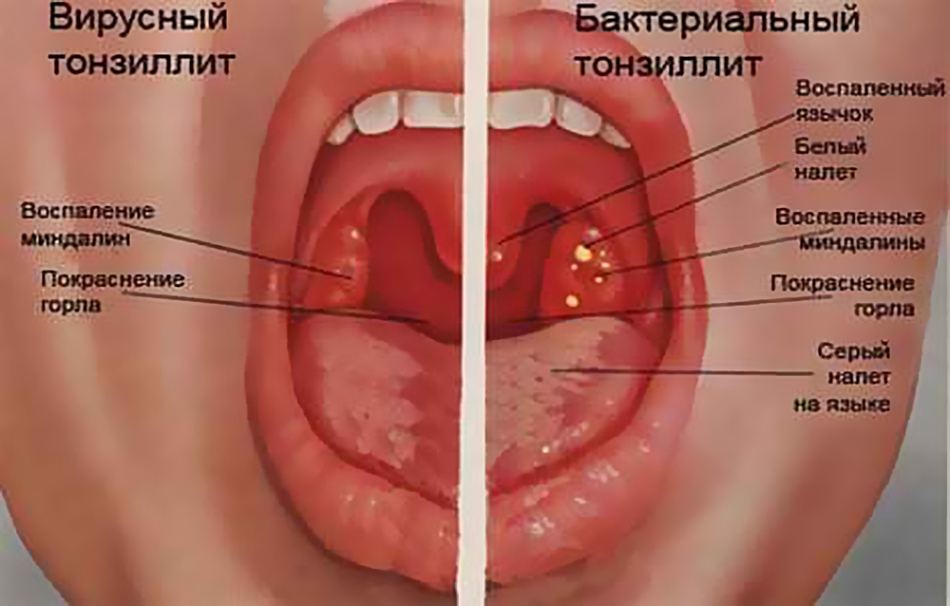 Types of tonsillitis( tonsillitis)
Types of tonsillitis( tonsillitis) - Angina is a serious infectious disease associated with the defeat of palatine tonsils by various pathogens. The disease is severe and accompanied by high fever and severe pain in the throat.
- For angina characterized by a dense gray-white coating on the tongue with bright red tonsils In some cases, one can observe abscesses or continuous white necrotic plaque. It is important for the doctor to correctly diagnose the disease and differentiate it from ARVI or influenza.
- Depending on the type of angina, treatment with antibiotic, antifungal or antiviral drugs is established. Local effects on the focus of inflammation, proper oral hygiene, a gentle diet and abundant warm drink lead to recovery.
- Untreated sore throat can go into chronic form and have severe consequences in the form of heart disease, kidney and rheumatic complications.
Plaque on the tongue after taking antibiotics: how to get rid?
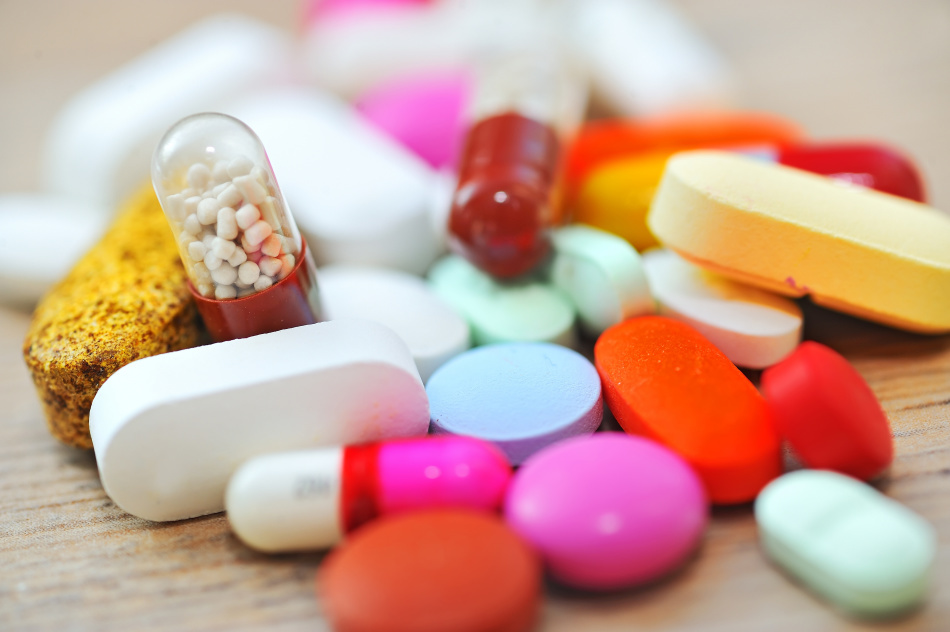 Drug treatment can cause plaque in the language
Drug treatment can cause plaque in the language - Infectious processes in the body require treatment with antibiotics. Often a combination of different antibiotics, as well as simultaneous use of other potent drugs: hormones, sulfonamides, nitrofurans, is used in the treatment.
- Taking medication depends on the severity of the disease, sometimes the course of treatment has a long time and leads to a violation of the imbalance of normal microflora. Dysbacteriosis is a serious complication after taking antibiotics.
- Gray-white dense plaque on the tongue can signal a change in the intestinal microflora in favor of pathogenic flora. Assignment of probiotics and immunomodulators will eliminate the problems.
Plaque in the language of pancreatitis, gastritis: causes and treatment
 Diet in gastrointestinal diseases is an important stage in recovery
Diet in gastrointestinal diseases is an important stage in recovery A plentiful white coating with a yellow tinge in the tongue can serve as a "beacon" for the appearance of functional digestive disorders and even point to such diseases,as gastritis and pancreatitis .Gastritis most often occurs with malnutrition, eating disorders, eating "unhealthy" foods. Loss of the tongue with a thick white coating is often accompanied by:
- severity in the stomach
- pain in the epigastric region
- with an unpleasant odor from the mouth
- with heartburn
- nausea
Inflammation of the pancreas or pancreatitis occurs when the enzymes of the gland, due to the inflammatory process, are not released into the duodenalgut, but lead a "destructive" action in the pancreas itself.
Self-digestion occurs. Toxins and elements of digestion can get into the bloodstream and disrupt the work of important organs: the heart, lungs, liver, brain.
 Patient examination
Patient examination Pancreatitis is a serious disease, its acute form requires treatment in the hospital. The initial forms of the disease can be identified with a stable white-and-yellow plaque in a language with accompanying symptoms:
- upper abdominal pain
- with vomiting bile
With digestive disorders, intestinal motility is impaired. To somehow help the intestines cope with food, on its walls the amount of villi for food processing increases.
On the surface of the tongue, the papillae also grow, which eventually thickens and clogs with the products of the vital activity of the bacteria. So the language is covered with a large layer of white-yellow plaque.
IMPORTANT: For periodic pain and discomfort in the stomach, consult a gastroenterologist for help.
To get rid of functional disorders of the gastrointestinal tract, gastritis, pancreatitis, and hence a plentiful white and yellow coating in the language, the following recommendations will help:
- It is necessary to revise your daily routine and analyze the intake and quality of food.
- It should be eaten fractionally, in small portions after 4 hours.
- It is recommended to exclude from the diet "harmful" products: fatty, canned, smoked, fried and sharp, fresh pastry, sweet soda water.
- Avoid eating "in a hurry."
- Thoroughly chew food.
- Do not eat too much hot and cold food.
Plaque in the language of adults and children and smell from the mouth: causes, treatment
 Smell from the mouth - a concomitant symptom of the disease
Smell from the mouth - a concomitant symptom of the disease - Plaque in the language is often accompanied by an unpleasant putrefactive odor from the mouth. This may be due to both a disruption in the digestive tract, and poor oral hygiene. In any case, it should be examined by specialists.
- The general analysis of blood and the procedure of endoscopic examination of the esophagus and stomach( FGS and FGDS) can reveal gastrointestinal pathologies.
- To remove sources of infection in the oral cavity, visit the dentist. Timely sanation of teeth, treatment of caries, gingivitis, stomatitis and other diseases will help get rid of the putrefactive smell and plaque on the tongue.
Putrefactive processes in the oral cavity can be stopped by herbal infusions cooked at home.
Infusion No. 1
Yarrow herb, plantain leaf, linden leaf and oregano grass are mixed equally. A tablespoon of collection is steamed 200 ml of boiling water. Insist 40 minutes. The glass is divided into two portions and drunk during the day.
Infusion №2
1 tablespoon of oak bark steamed 200 ml of boiling water. The received infusion rinse the mouth several times a day.
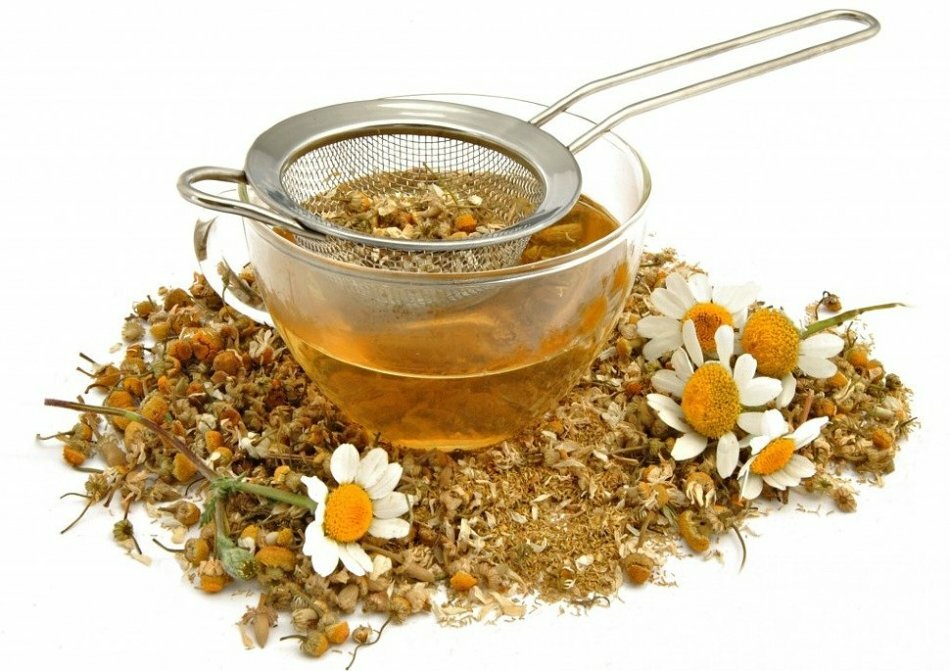 Chamomile infusion possesses the antiseptic property
Chamomile infusion possesses the antiseptic property Infusion No. 3
Stir a leaf of wild strawberry, chamomile flowers, a leaf of sage and mint. A handful of herbs are poured into 500 ml of boiling water. With a warm infusion, rinse your mouth during the day after eating.
Plaque in the tongue and dry mouth and bitterness in the mouth: causes, treatment
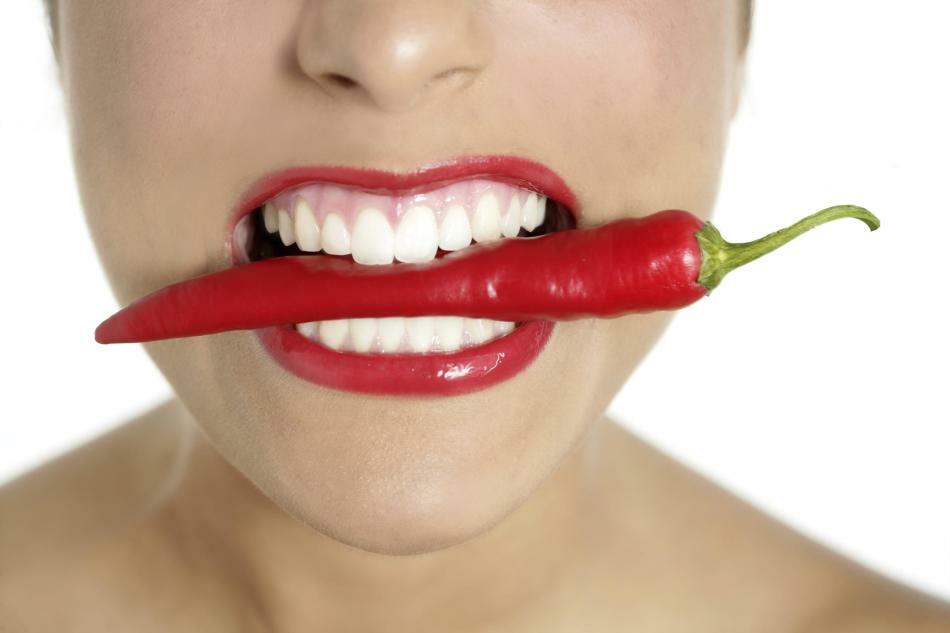 Dryness and bitterness in the mouth, accompanied by a blister in the tongue, may manifest itself in a number of diseases
Dryness and bitterness in the mouth, accompanied by a blister in the tongue, may manifest itself in a number of diseases Plaque on the tongue is often accompanied by symptoms of dryness and bitterness in the oral cavity. This can be caused by a number of reasons.
- Salty and fatty foods before going to bed can cause such symptoms. This is a great burden on the liver and its reaction to "heavy" foods manifests itself in the form of a yellow coating on the tongue, the appearance of bitter aftertaste and dryness in the mouth.
- Intoxication of the body can also cause bitterness, accompanied by nausea and vomiting, sweating, headache, dryness or salivation.
- Gastrointestinal problems are accompanied by morning bitterness, "imposed" tongue, eructation and heartburn. If such symptoms become habitual, it is recommended that you pay attention to your diet and your meal hours.
- It should be taken into account that the initial stage of diabetes is characterized by dryness and bitterness in the mouth, thirst and urge to urinate. In this case, the tongue has a dense yellowish coating. Such symptoms require an immediate visit to the endocrinologist.
- Toxicosis of pregnant women is often accompanied by nausea, bitterness and dryness in the oral cavity. You should carefully consider your diet: remove from the diet fried and fatty foods, smoked foods and canned food. In the list of necessary products include vegetables, fruits, berries in sufficient quantities.
Prophylaxis of plaque in children and adults
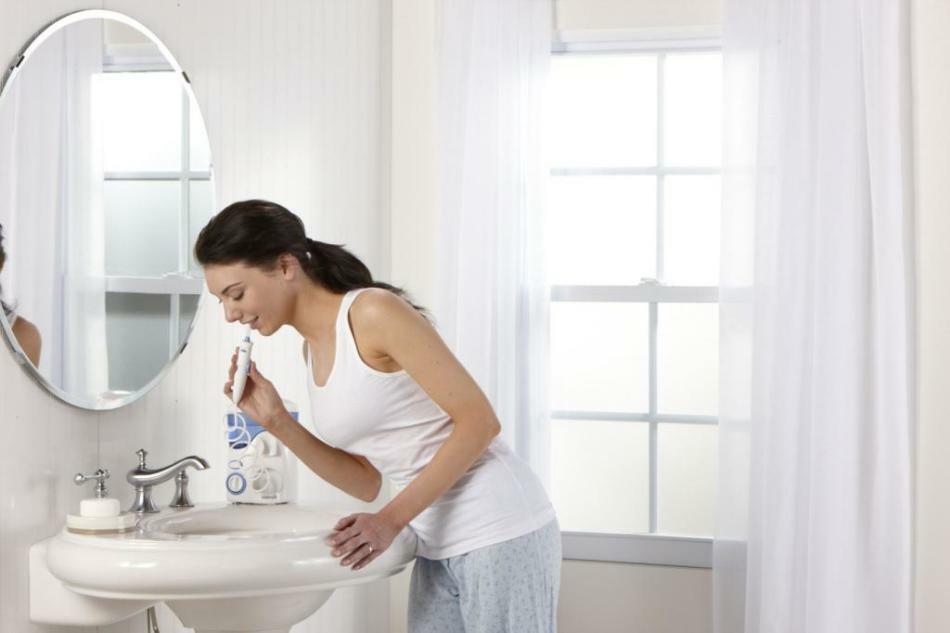 Oral hygiene
Oral hygiene Plaque in the tongue consists of cells of depleted epithelium, accumulated bacteria and products of their vital activity. To keep your tongue clean and healthy, it is recommended that you follow preventive measures and do not allow the accumulation of such "garbage" on the surface of the tongue.
Regular cleansing of the tongue will prevent such diseases of the oral cavity as:
- gingivitis
- stomatitis
- caries
- periodontitis
Clumps of plaque block taste buds, but a "clean" tongue will help preserve taste sensations.
What to do for the health of the language?
- Daily inspect your language in the mirror for the appearance of a raid.
- Clean the tongue twice a day: morning and evening. This hygiene procedure should be combined with tooth care. It is necessary to clean the tongue with careful movements with the help of special scrapers, a teaspoon or a toothbrush.
- After each meal, rinse the oral cavity.
- Do not take hot and cold food.
- Do not take sharp and injurious objects into mouth.
 Cleaning the tongue
Cleaning the tongue IMPORTANT: Daily light massage of the tongue( toothbrush, tea spoon, special scraper) for 2 minutes activates the work of our important internal organs: heart, liver, lungs, kidneys.
Rules for cleaning the tongue
- Scraper or teaspoon is carried on the surface of the tongue from the side of the pharynx to the tip.
- Such movements are carried out several times throughout the language, affecting the lateral surfaces of the tongue.
- Periodically wash the scraper or spoon from contamination with clean running water.
- The tongue must be cleaned carefully, so as not to injure the papillae of the tongue mucosa.
